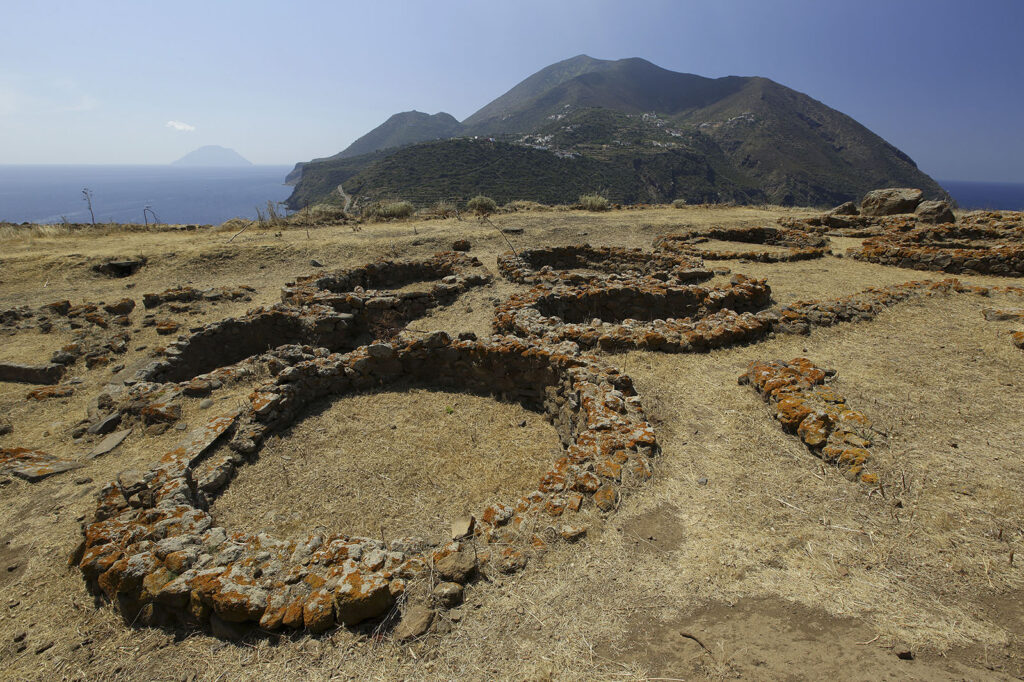The village was brought to light thanks to excavations between 1952 and 1969 in a large plateau at 100 metres above sea level. The reason for this position probably derives from defensive needs that led the population to move from the village of Filo Braccio to Capo Graziano.
The village extends not only on the plateau but also on higher levels and consists of 27 oval-shaped huts leaning against one another. The dimensions vary from 3 to 6 metres in diameter. They were erected with dry-stone walls 50-60 cm wide on which the wooden structure and the roof were then placed. Many huts have their own characteristics, also linked to their use. The floor level was generally lowered and the rooms were like basements.
In the southern part of the village the pre-existing huts were rebuilt or their structures modified, for the creation of new lodgings, destined to welcome Sicilian people but of Milazzese culture. In this new cultural phase the villages were built in sheltered positions and equipped with defensive systems on every Aeolian island except Vulcano.
According to some archaeologists the great quantity of Aegean pottery fragments found would demonstrate the role played by the island of Filicudi and the other islands in the trade of that period. After a phase of decline in the previous Copper Age, they became emporia of the Mediterranean trade, perhaps “the last stop reached by the navigation of the Aegean people who traded the refined products of their art and industry with the raw materials that the Aeolian ships had brought from distant shores”.